A couple of months ago we visited Glacier’s End Arboretum, in Olympia, WA, where we found that we kept wanting to touch the plants! It wasn’t just that the shapes and colors were striking; the textures made us feel like we were in a petting-zoo.
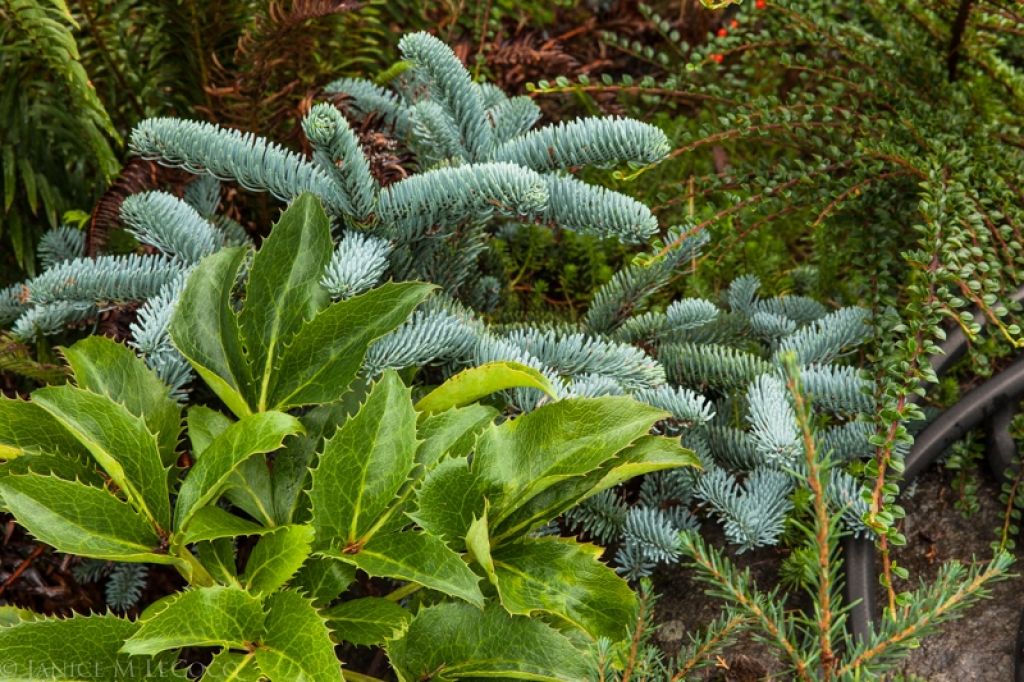
The well-textured garden is delightful in all seasons. While we think of texture as a component of how something feels, texture also affects appearance. Texture can be fine or coarse, matte or glossy. The above trio contains a large-leaved (coarse), glossy hellebore, a small-needled (fine) matte fir and a very fine-leaved glossy cotoneaster. Lots to interest, even without the lovely colors!
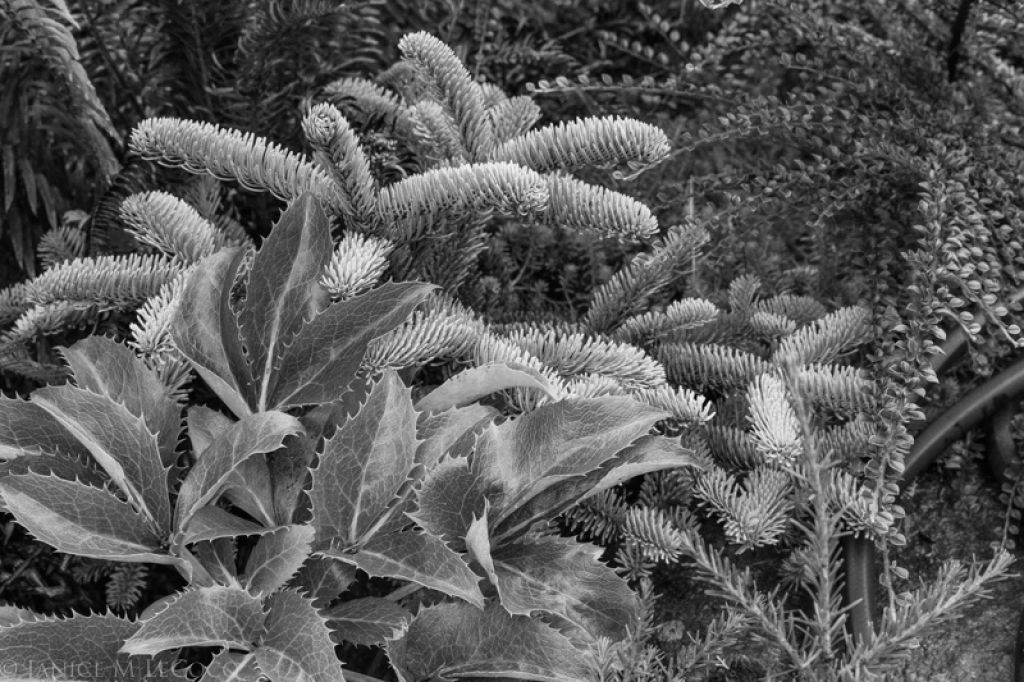
Eliminating the color does not decrease the textural variation; it actually enhances it, with the fir’s needles bristling and the glossy hellebore continuing to shine. Now, what about color variation without different textures?
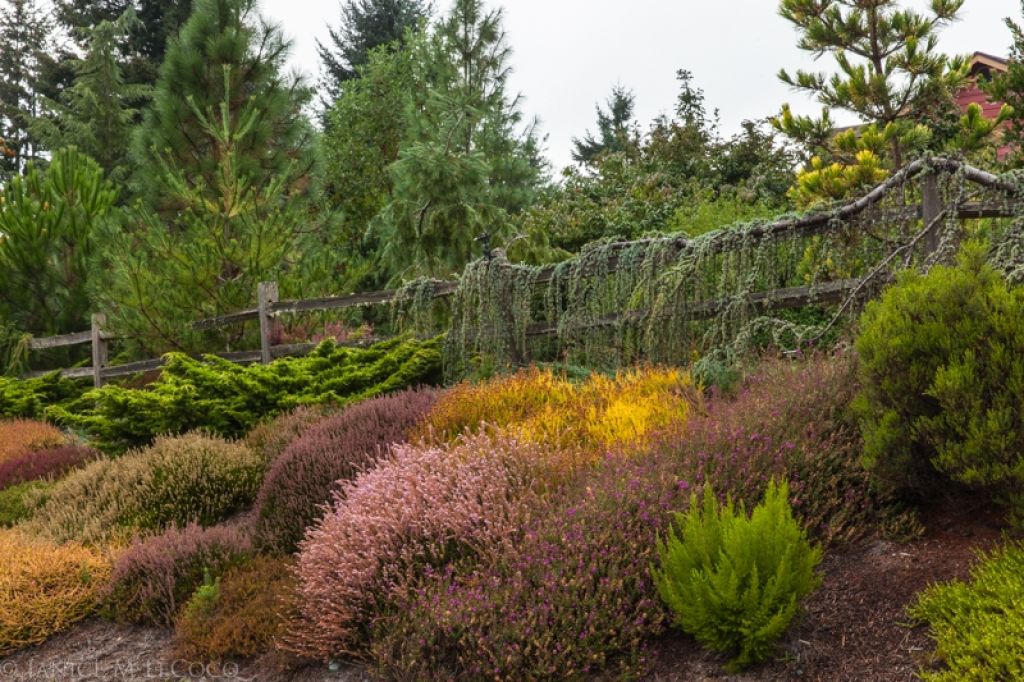
The colors of the heathers are striking and the fact that they (and the cedar) share the same fine texture does not diminish the loveliness of the planting. However, if you remove the color, you flatten the effect and reduce the impact.
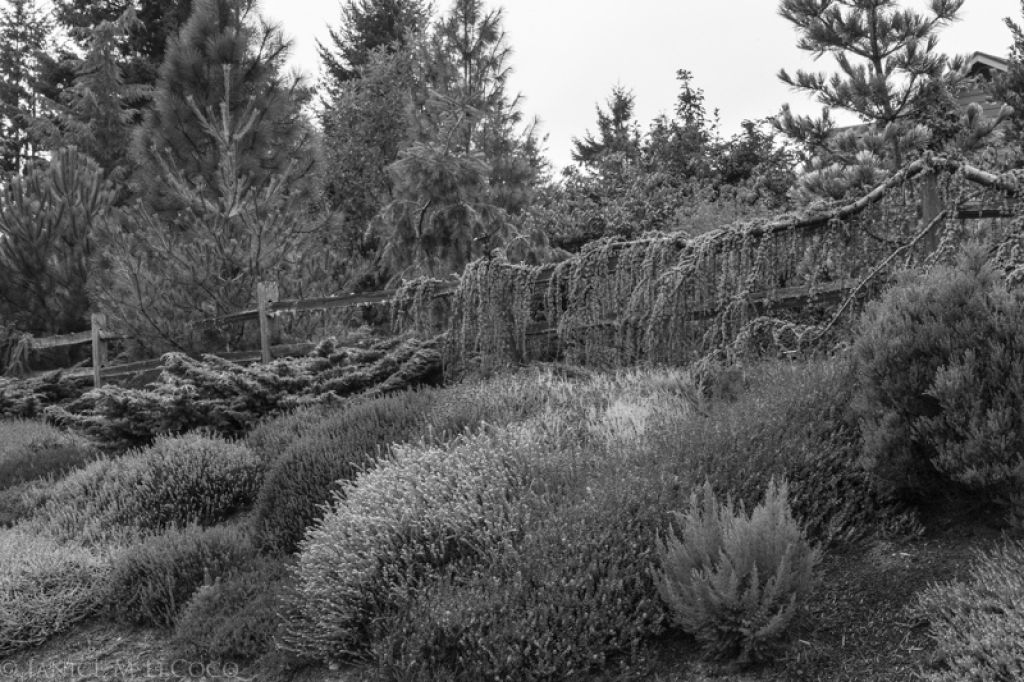
When most of us begin to garden we are attracted first to color and tend to think of garden design and plant selection with color as the sole attribute, usually flower color. As we approach the shortest day of the year and the time when gardens are mostly bereft of flowers, it is a good opportunity to consider how to make our gardens interesting and inviting all year long.
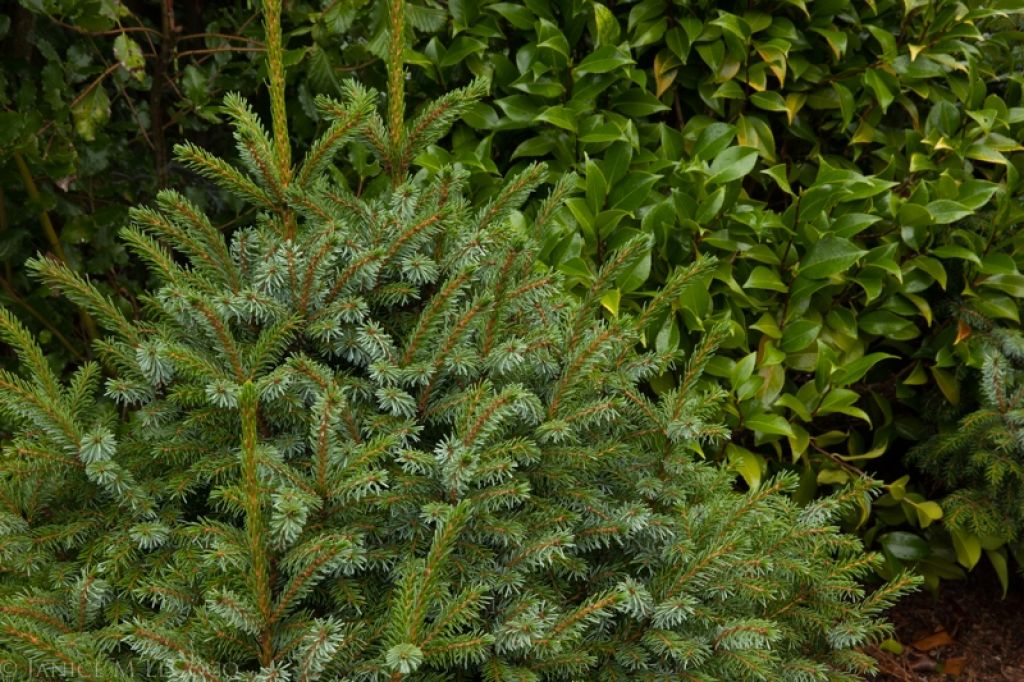
The photo above illustrates the most basic of textural combinations: pairing matte needles with coarse, shiny leaves.
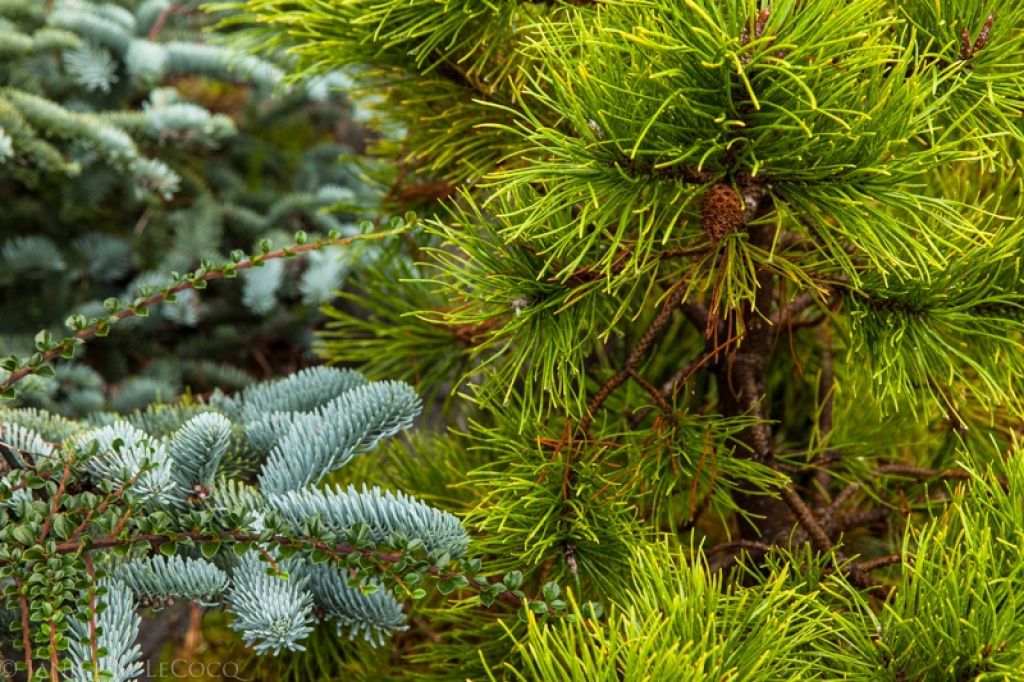
Texture is a continuum. The plants in the above photo are both technically fine-textured, but the Abies has short, stubby whiskers and the pine’s needles are wispy threads. The twigs and stems add a tougher grace note. Yes, it’s hard to ignore the color, but texture is unwilling to cede the floor completely.
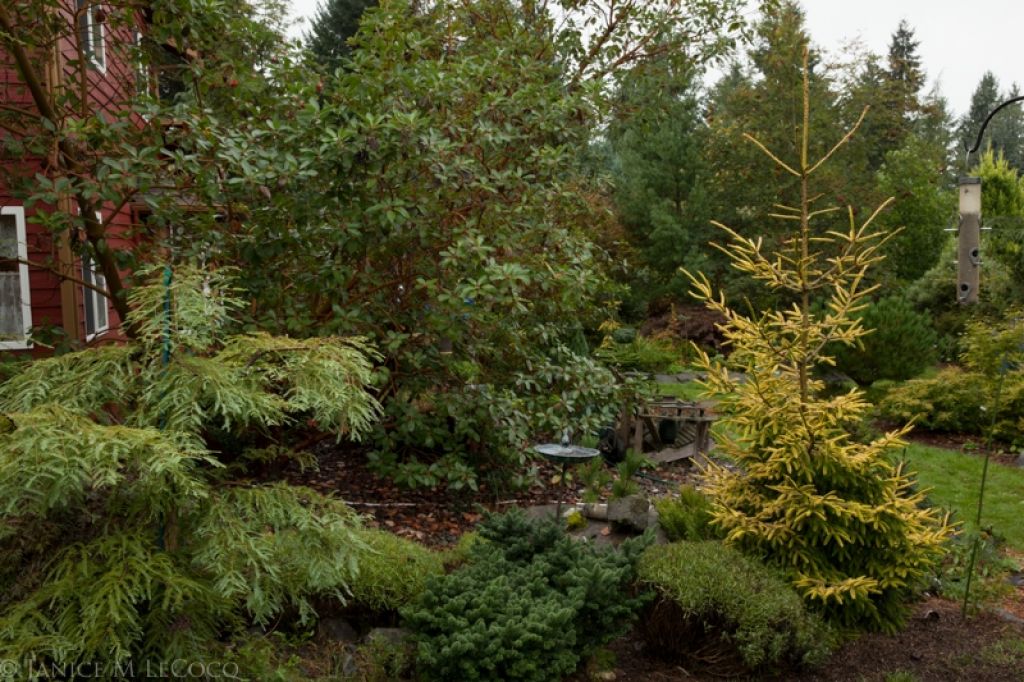
Glacier’s End is primarily a conifer garden. Mixing conifers, which generally have needles, thus are fine-textured, with broad leaved, coarsely textured, plants is an easy way to create interesting combinations that are attractive and eye-catching all year round.
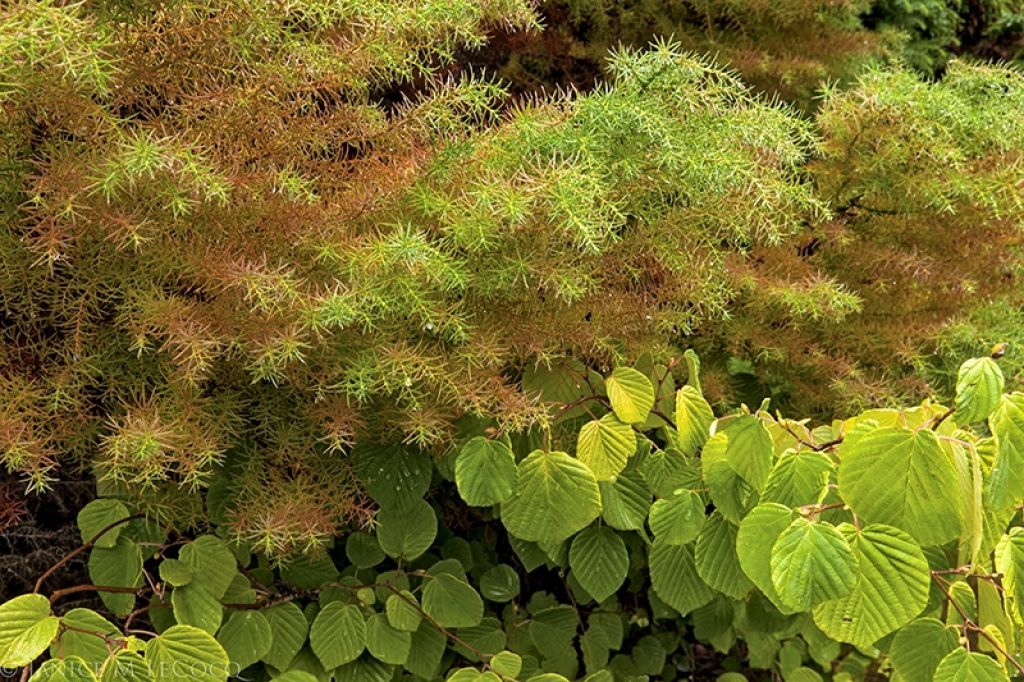
Most Cryptomeria (the shrub on the left in the photo above) take on lavender or rusty hues in winter; the two tones of this one match the Corylopsis spicata leaves and stems. We’d like to give a gold star to the garden makers, who not only got the color combination right, but created a marvelous contrast of opposite textures.
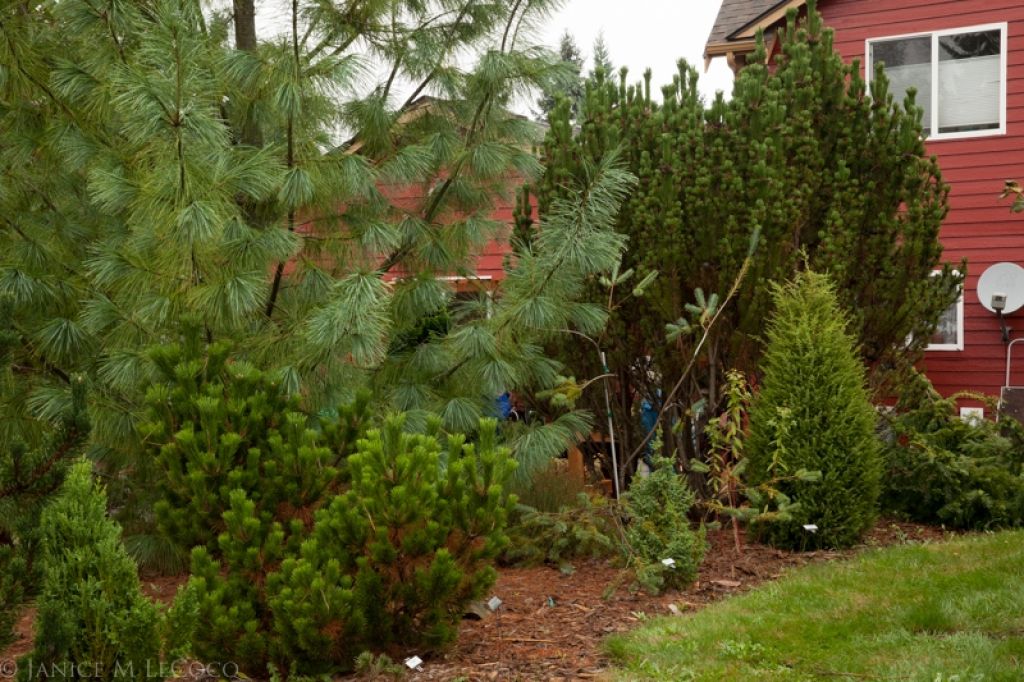
You can even create textural variety within one group of plants. For example, pines can have needles that are long or short, bristly or wispy, dense or loose, upright or droopy, even matte or shiny. All affect the way that light and wind interact with and intensify the textures.
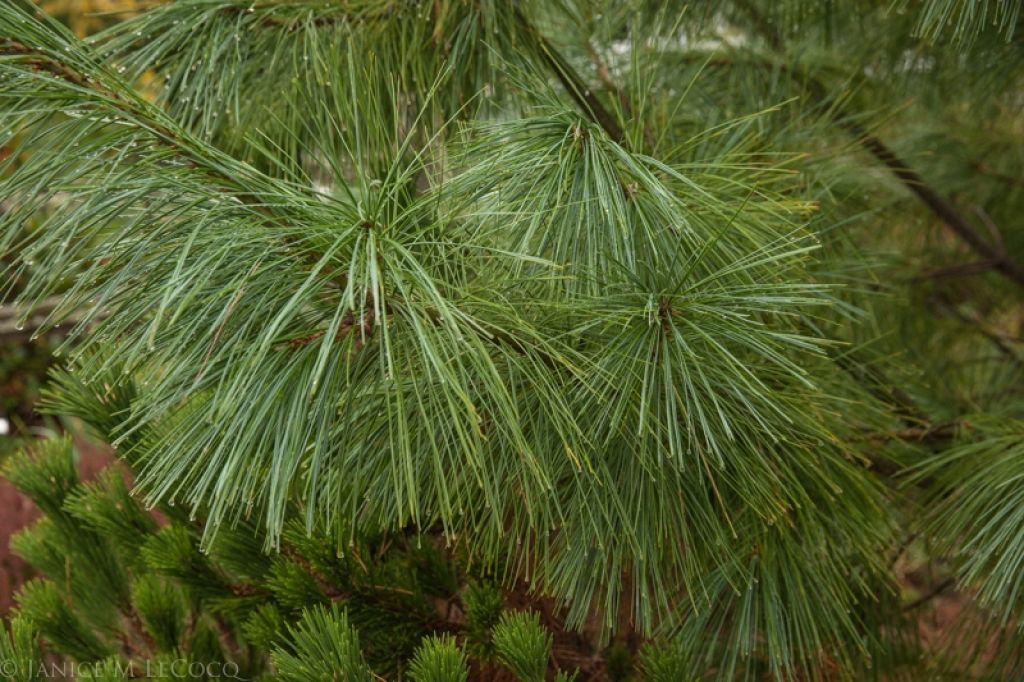
Textural differences can be very subtle, and structure, size and orientation play parts as important as color. It also depends on distance. Fine differences such as in the above photo are only apparent when you get close to the plants. Isn’t it wonderful that as you approach, the plants become more interesting?
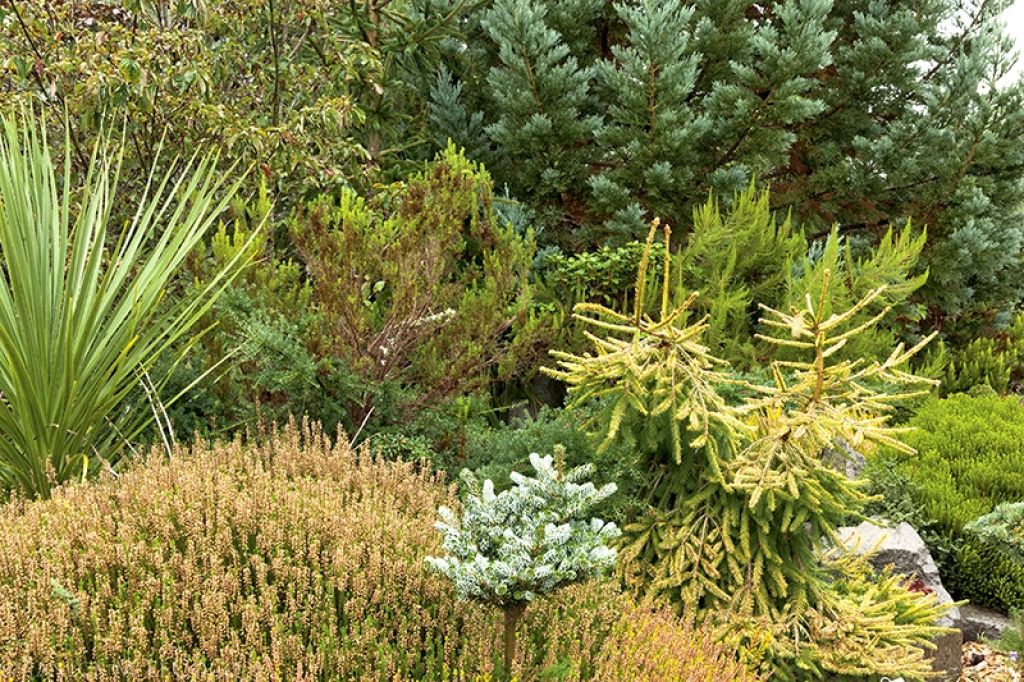
Plants with strappy leaves like Dasylirion, Yucca or Phormiums add coarseness to an otherwise finely-textured combination. The conifers and heathers in the above photo are anchored by the coarser Yucca and, we note, the stone.
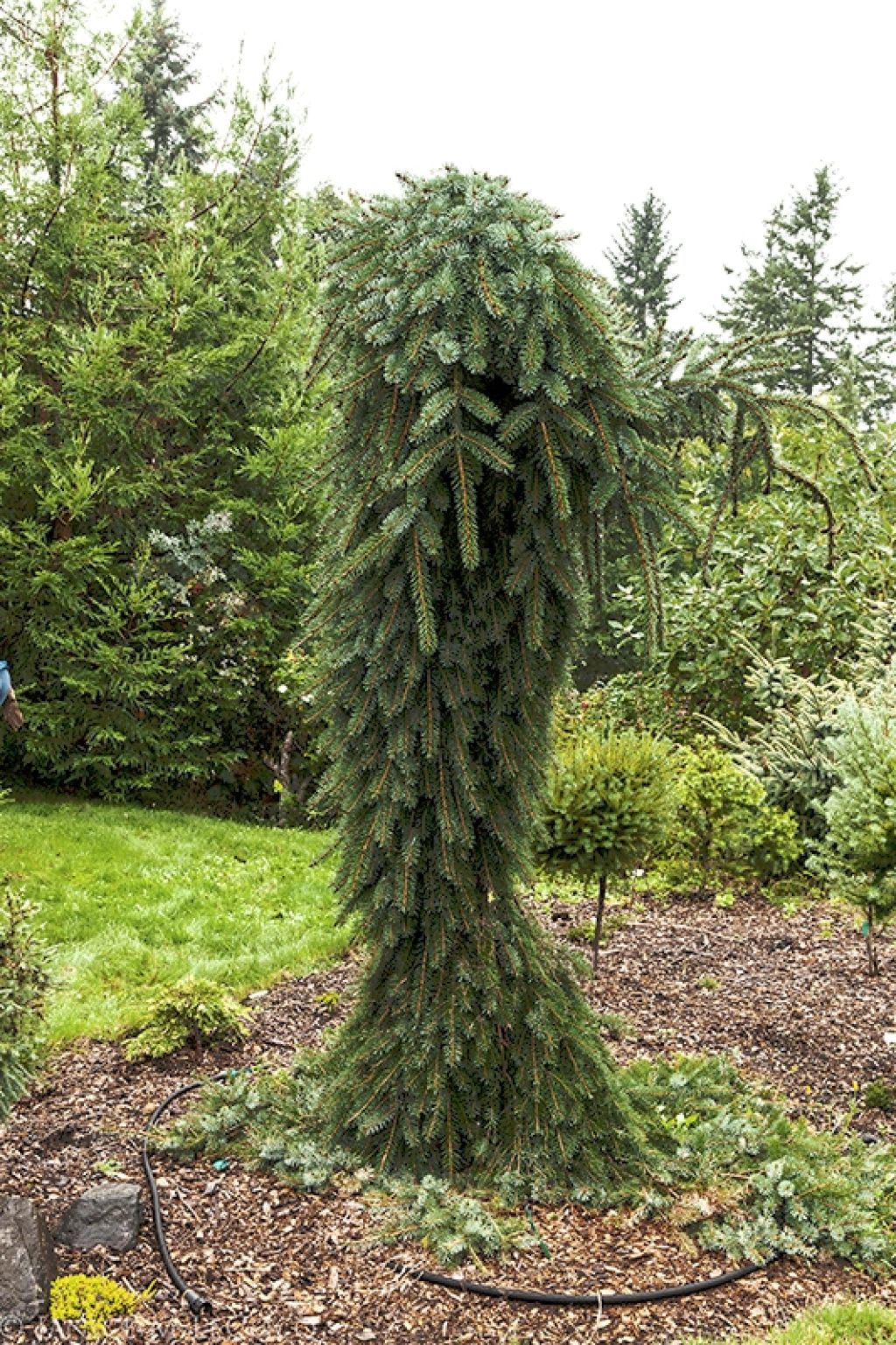
Sometimes a single texture can be on display as with the Serbian spruce above. The foliage begs to be touched.
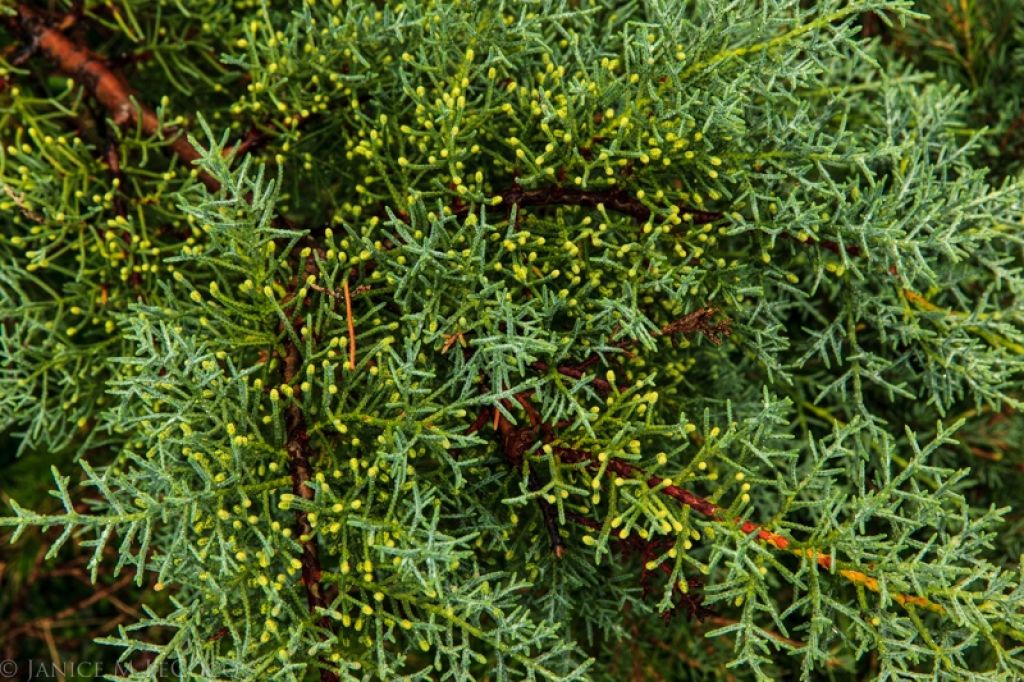
Similarly, without help from others, ‘Raywood’s Weeping’ Arizona cypress provides a virtual explosion of texture, with immature pollen cones lighting up the tips of the branchlets.
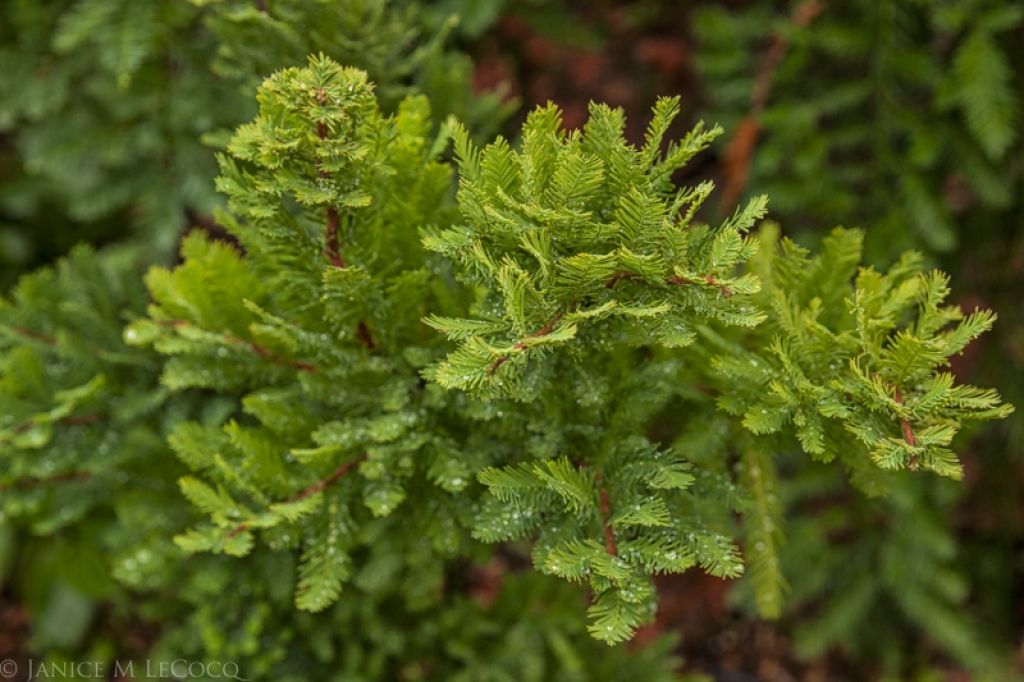
A garden’s textural highlights vary with the seasons. Most of the plants at Glacier’s End are evergreen, but even with deciduous plants you can have texture in winter, when it often comes from bark and stems.
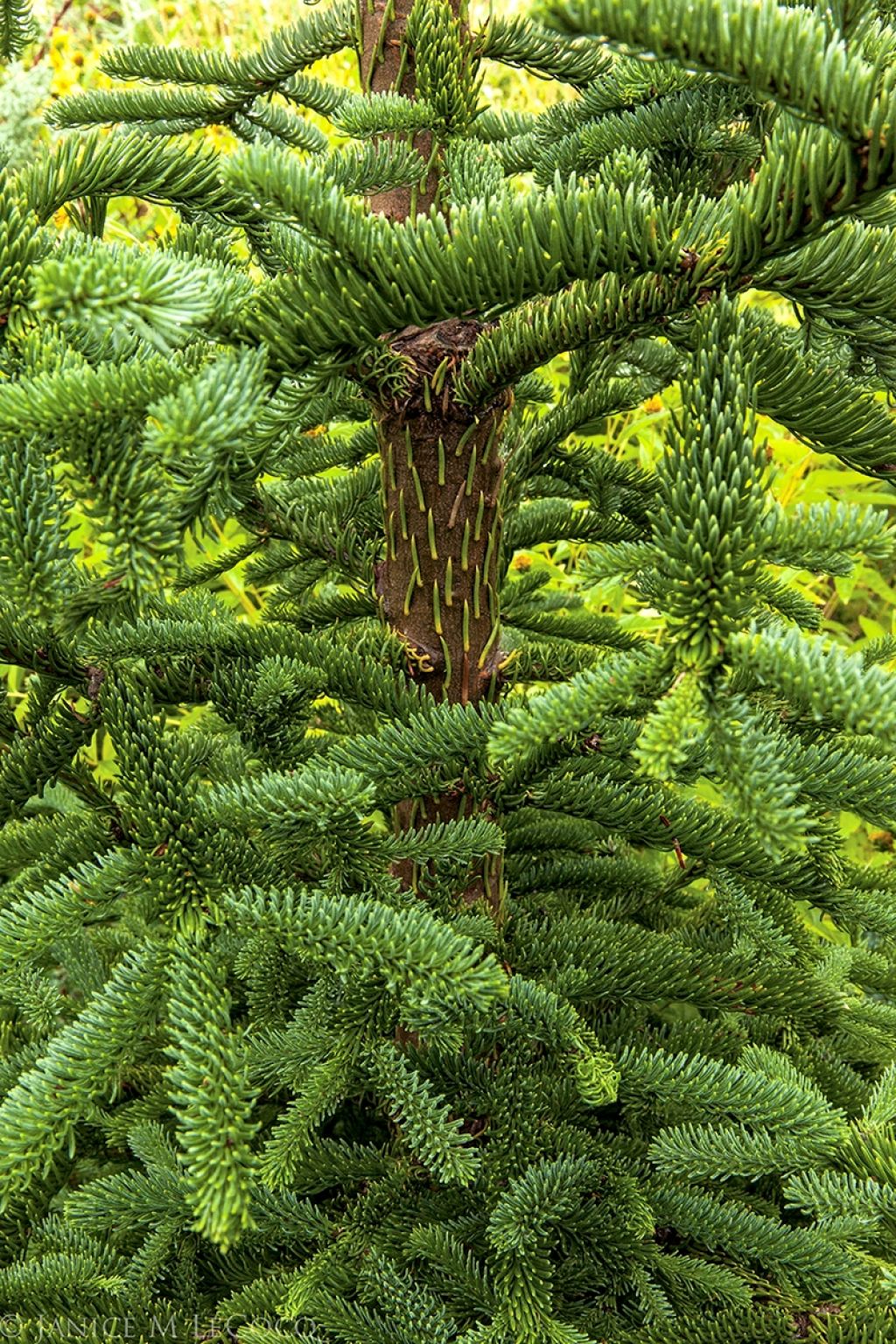
And don’t forget hardscape when creating textural contrasts in your garden. Stones add coarseness and heft that offset the fine needles and small leaves of the nearby plants.
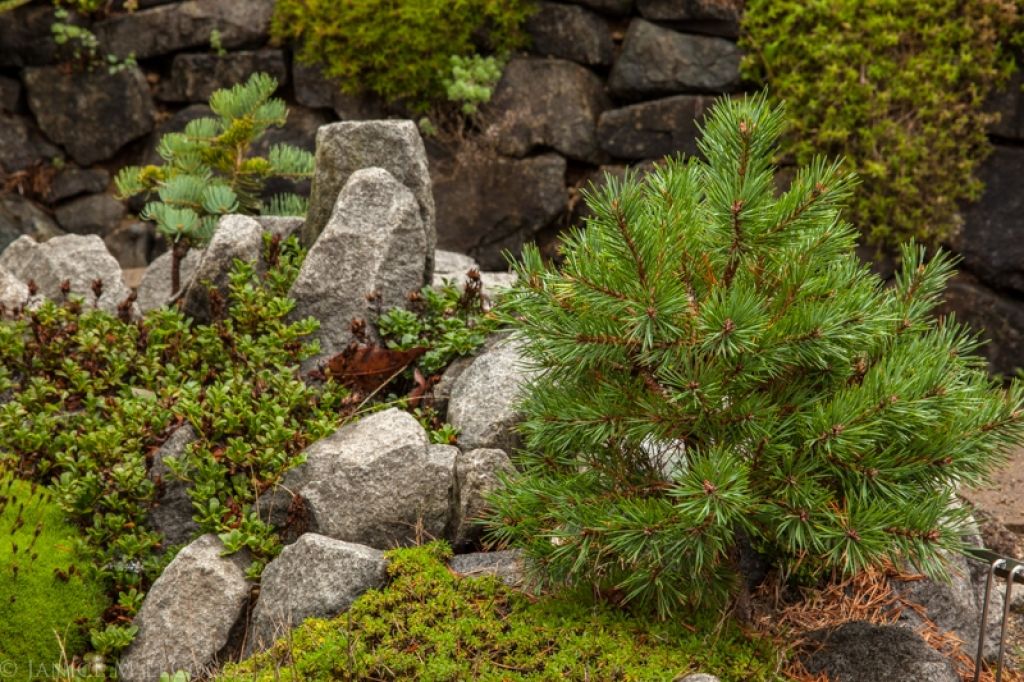
We don’t want you to forget about color and we don’t want you to forgo form and structure. We just want you to add texture to your garden to-do list. Make a New Year’s resolution to texturize your garden in 2016!
Glacier’s End Arboretum is a private garden in Olympia, WA. It is open by appointment to members of the American Conifer Society (www.conifersociety.org).
Read more about garden texture: Not Another Gardening Blog – Weaving your Garden